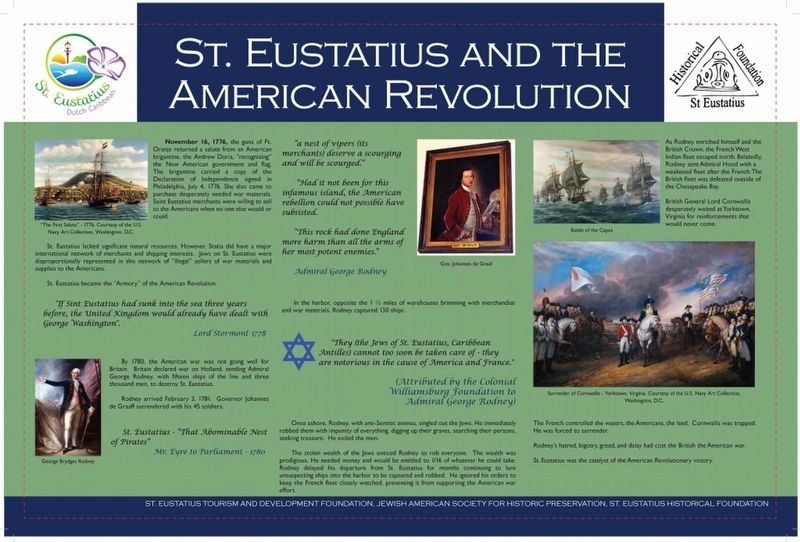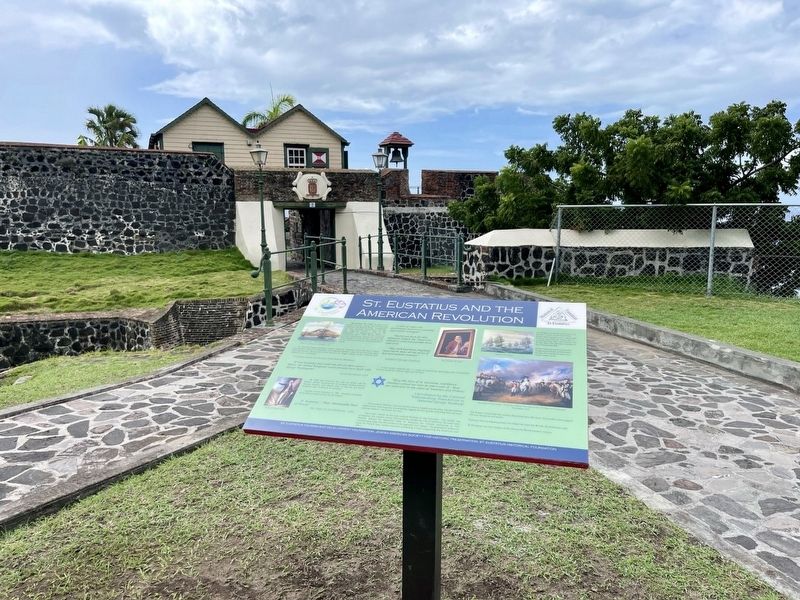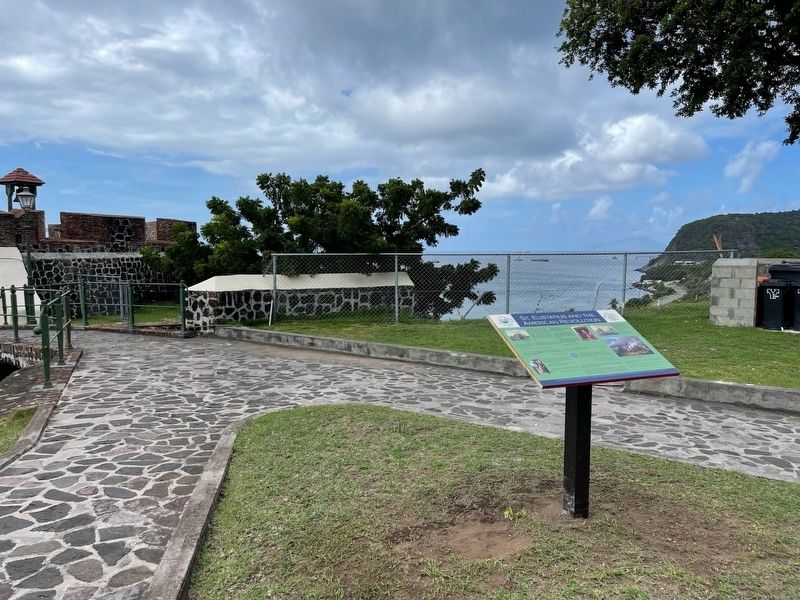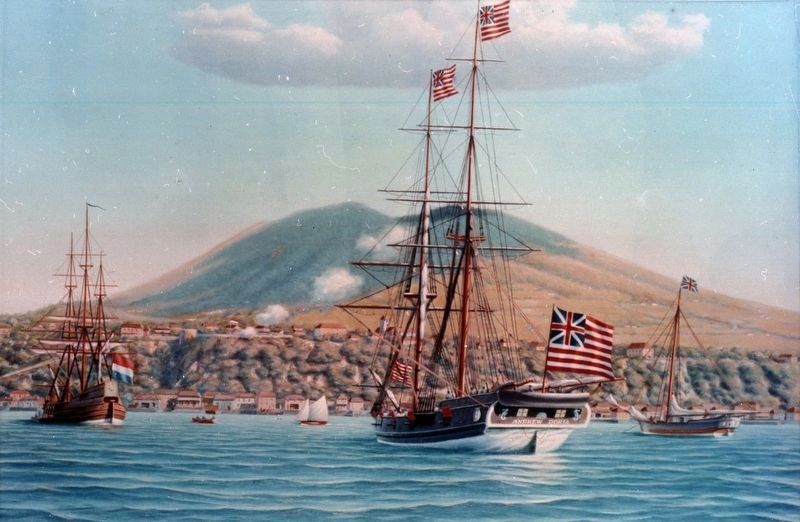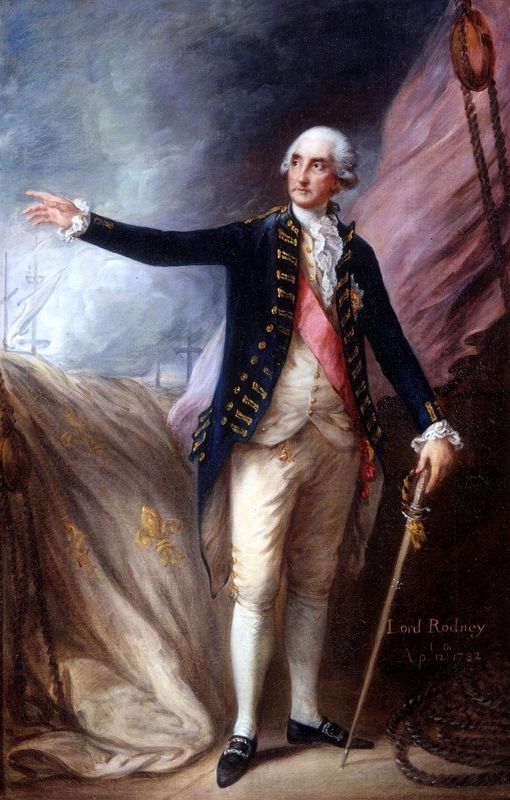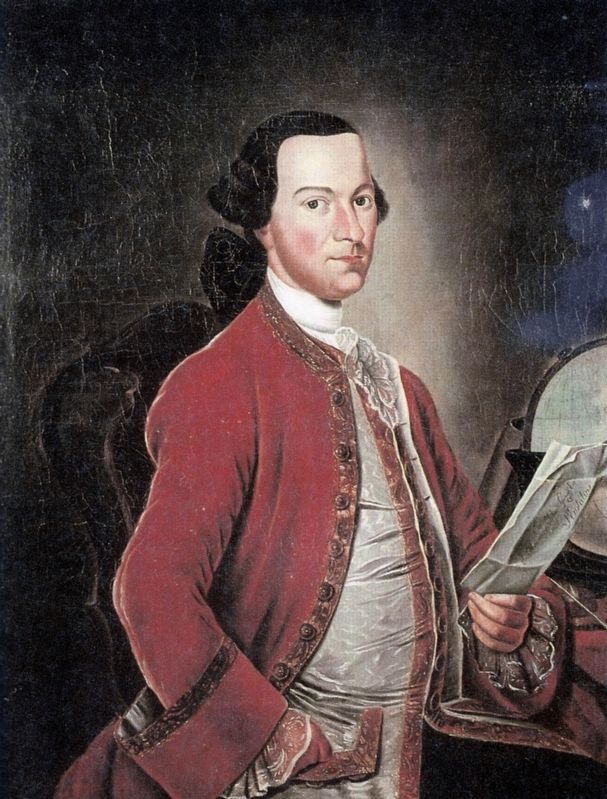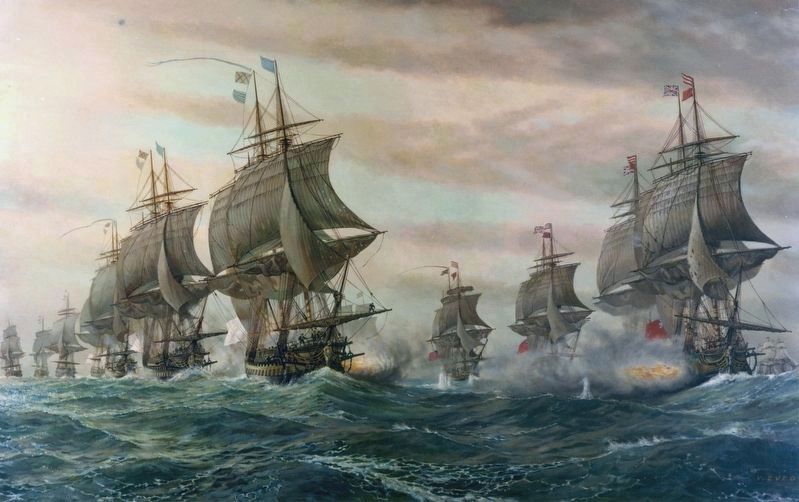Oranjestad, Sint Eustatius, Dutch Caribbean — Caribbean Region (Lesser Antilles)
St. Eustatius and the American Revolution
November 16, 1776, the guns of Ft. Oranje returned a salute from an American brigantine, the Andrew Doria, “recognizing” the New American government and flag. The brigantine carried a copy of the Declaration of Independence signed in Philadelphia, July 4, 1776. She also came to purchase desperately needed war materials. Saint Eustatius merchants were willing to sell to the Americans when no one else would or could.
St. Eustatius lacked significant natural resources. However, Statia did have a major international network of merchants and shipping interests. Jews on St. Eustatius were disproportionally represented in this network of “illegal” sellers of war materials and supplies to the Americans.
St. Eustatius became the “Armory” of the American Revolution.
“If Sint Eustatius had sunk into the sea three years before, the United Kingdom would already have dealt with George Washington.”
By 1780, the American war was not going well for Britain. Britain declared war on Holland, sending Admiral George Rodney, with fifteen ships of the line and three thousand men, to destroy St. Eustatius.
Rodney arrived February 3, 1781. Governor Johannes de Graaff surrendered with his 45 soldiers.
St. Eustatius - “That Abominable Nest of Pirates”
“A nest of vipers (its merchants) deserve a scourging and will be scourged.”
“Had it not been for this infamous island, the American rebellion could not possible have subsisted.”
“This rock had done England more harm than all the arms of her most potent enemies.”
In the harbor, opposite the 1½ miles of warehouses brimming with merchandise and war materials, Rodney captured 130 ships.
“They (the Jews of St. Eustatius, Caribbean Antilles) cannot too soon be taken care of – they are notorious in the cause of America and France.”
Once ashore, Rodney, with anti-Semitic animus, singled out the Jews. He immediately robbed them with impunity of everything, digging up their graves, searching their persons, seeking treasure. He exiled the men.
The stolen wealth of the Jews enticed Rodney to rob everyone. The wealth was prodigious. He needed money and would be entitled to 1/16 of whatever he could take. Rodney delayed his departure from St. Eustatius for months continuing to lure unsuspecting ships into the harbor to be captured and robbed. He ignored his orders to keep the French fleet closely watched, preventing it from supporting the American war effort.
As Rodney enriched himself and the British Crown, the French West Indian fleet escaped north. Belatedly, Rodney sent Admiral Hood with a weakened fleet after the French. The British fleet was defeated outside of the Chesapeake Bay.
British General Lord Cornwallis desperately waited at Yorktown, Virginia for reinforcements that would never come.
The French controlled the waters, the Americans, the land. Cornwallis was trapped. He was forced to surrender. Rodney’s hatred, bigotry, greed, and delay had cost the British the American war.
St. Eustatius was the catalyst of the American Revolutionary victory.
Erected 2022 by Jewish American Society for Historic Preservation, St. Eustatius Tourism and Development Foundation, St. Eustatius Historical Foundation.
Topics and series. This historical marker is listed in these topic lists: Colonial Era • Patriots & Patriotism • War, US Revolutionary. In addition, it is included in the Jewish American Society for Historic Preservation. series list. A significant historical date for this entry is November 16, 1776.
Location. 17° 28.94′ N, 62° 59.183′ W. Marker is in Oranjestad, Sint Eustatius. Marker is on Fort Oranjestraat, on the right when traveling south. Marker is outside the entrance to Ft. Oranje. Touch for map. Marker is at or near this postal address: Fort Oranjestraat 1, Oranjestad, Sint Eustatius, Dutch Caribbean. Touch for directions.
More about this marker. This interpretive panel includes five images. The first in the upper left is the oil painting “The First Salute” by Phillips Melville, from the U.S. Navy Art Collection, Washington D.C. It depicts the Continental brig Andrew Doria receiving a salute from the Dutch fort at St. Eustatius 16 November 1776.
On the lower left is the 1783 oil portrait by Thomas Gainsborough captioned “George Brydges Rodney.” In the center column is an 18th century oil portrait by an unidentified painter captioned “Gov. Johannes de Graaf.”
In the upper right is an undated U.S. Navy oil painting by V. Zveg captioned “Battle of the Capes” depicting the French line (left) and the British line (right) in battle at the mouth of the Chesapeake Bay in Virginia.
The fifth image is just below the previously described is the 1820 oil painting by John Trumbull located in the U.S. Capitol in Washington D.C. It is captioned “Surrender of Cornwallis – Yorktown, Virginia.”
Regarding St. Eustatius and the American Revolution. This interpretive panel is the first historical marker to clearly reflect how the tiny Dutch Island of St. Eustatius
fundamentally impacted the course and outcome of the American Revolution.
After British Admiral Rodney captured the island from the Dutch with its vast supplies for the American Revolutionary forces, he destroyed, sold, or pillaged for himself what he could.
St. Eustatius was home to a large Sephardic merchant Jewish community who were significant agents acting between Holland and the American Revolutionary forces. They, as did all merchants on the Island trading with and for the American Revolutionary Forces, acquired enormous wealth.
Rodney was filled with anti-Semitic outrage and animus when he encountered the island's Jews. He robbed them and brutally deported the heads of the households, leaving the families impoverished and desperate.
He savored how he had robbed the Jews of their wealth with impunity. Recognizing how easily he had robbed the Jews for his own benefit Rodney rationalized what if he stayed on the Island longer? He could continue easily robbing all merchants on St. Eustatius and those whose ships were arriving daily.
Rodney was personally in debt. He badly needed the money. The potential for him was enormous.
Rodney violated his orders to destroy the supplies meant for the American forces, and shadow the nearby French Fleet.
His greed caused him to cast better judgement aside. He remained on St.
Eustatius continuing to rob unsuspecting merchants ships for months.
The French Fleet, screened by the Spanish Caribbean Fleet, escaped Northwards to bottle up Cornwallis at Yorktown.
Rodney sent a weak relieving fleet to Cornwallis. It was defeated by the French at the Battle of the Capes.
Cornwallis' fate was sealed. He could no longer expect relief from the sea. Washington's Army, with French land military support, trapped him along the James River in Yorktown.
After a short battle, Cornwallis surrendered. The American Revolution was won because of Rodney's greed that had been amplified by his hate for the Jewish merchants of St. Eustatius.
Also see . . .
1. The Jews of St. Eustatius, the Golden Rock to the Golden Door.
Of the many islands in the Caribbean, St. Eustatius is one of the smallest. It may be small but the island played an enormous role in the success of the American Revolution.(Submitted on November 11, 2022, by Jerry Klinger of Boynton Beach, Florida.)
The Jews of St. Eustatius were central to that success but not for the reasons you would have expected.
2. Andrew Doria - and the First Salute.
On 16 November 1776, the 14-gun American brig Andrew Doria commanded by Captain Isaiah Robinson sailed, flying the Continental Colors of the fledgling United States, into the anchorage below St. Eustatius' Fort Oranje. Robinson announced his arrival by firing a thirteen gun salute, one gun for each of the thirteen American colonies in rebellion against Britain. Governor Johannes de Graaff replied with an eleven-gun salute from the cannons of Fort Oranje (international protocol required two guns fewer to acknowledge a sovereign flag). It was the first international acknowledgment of American independence.The Andrew Doria had arrived to purchase munitions for the American Revolutionary forces. She was carrying a copy of the Declaration of Independence which was presented to Governor De Graaff. An earlier copy had been captured by the British on its way to Holland. It was wrapped in documents that the British believed to be a strange cipher, but were actually written in Yiddish, addressed to Jewish merchants in Holland.(Submitted on November 11, 2022, by Jerry Klinger of Boynton Beach, Florida.)
Additional keywords. First Salute, Admiral Rodney, Jewish, De Graff
Credits. This page was last revised on January 27, 2024. It was originally submitted on November 11, 2022, by Jerry Klinger of Boynton Beach, Florida. This page has been viewed 318 times since then and 59 times this year. Photos: 1, 2, 3. submitted on November 11, 2022, by Jerry Klinger of Boynton Beach, Florida. 4, 5, 6, 7, 8. submitted on December 23, 2022, by J. J. Prats of Powell, Ohio. • Andrew Ruppenstein was the editor who published this page.
